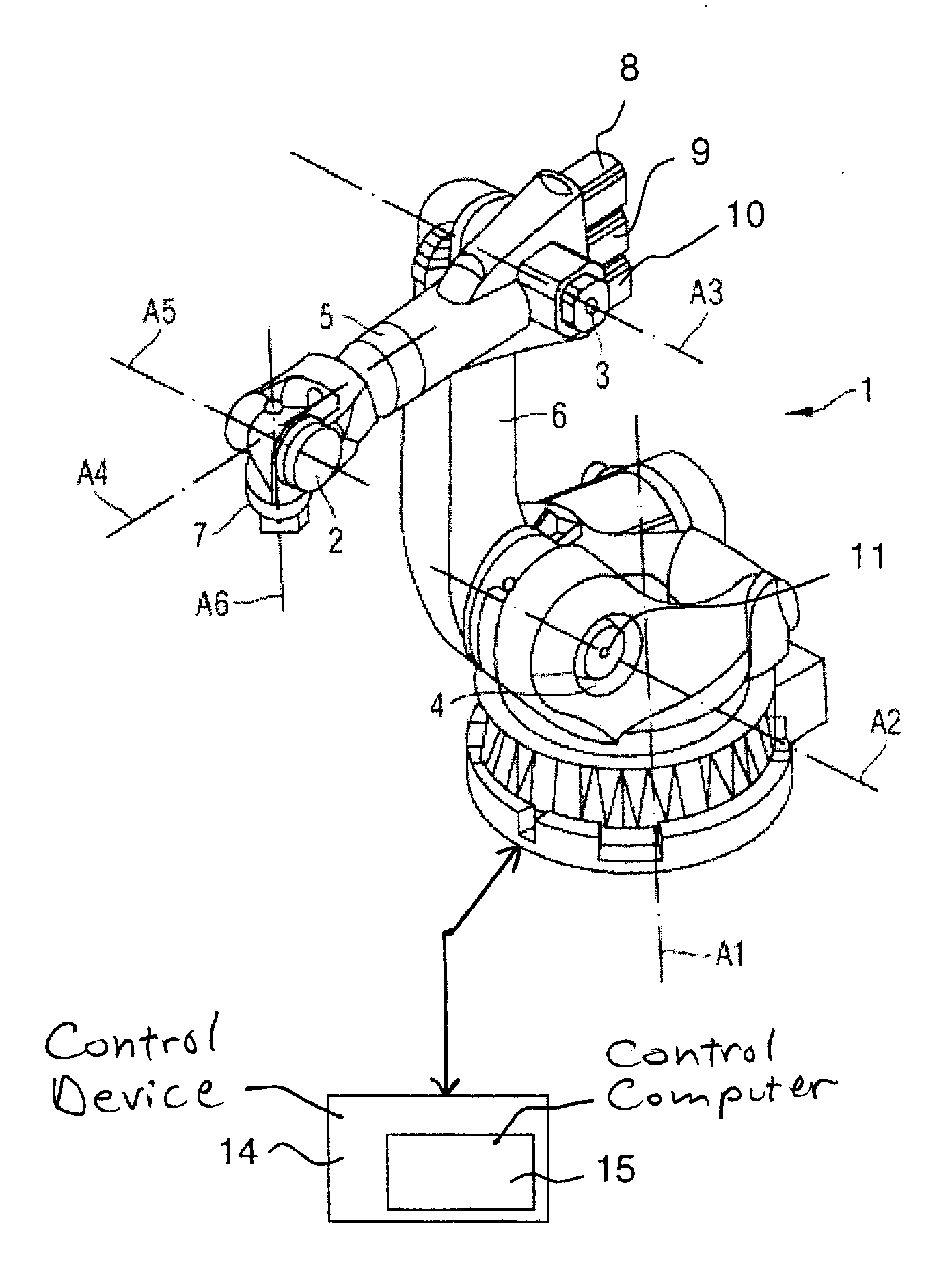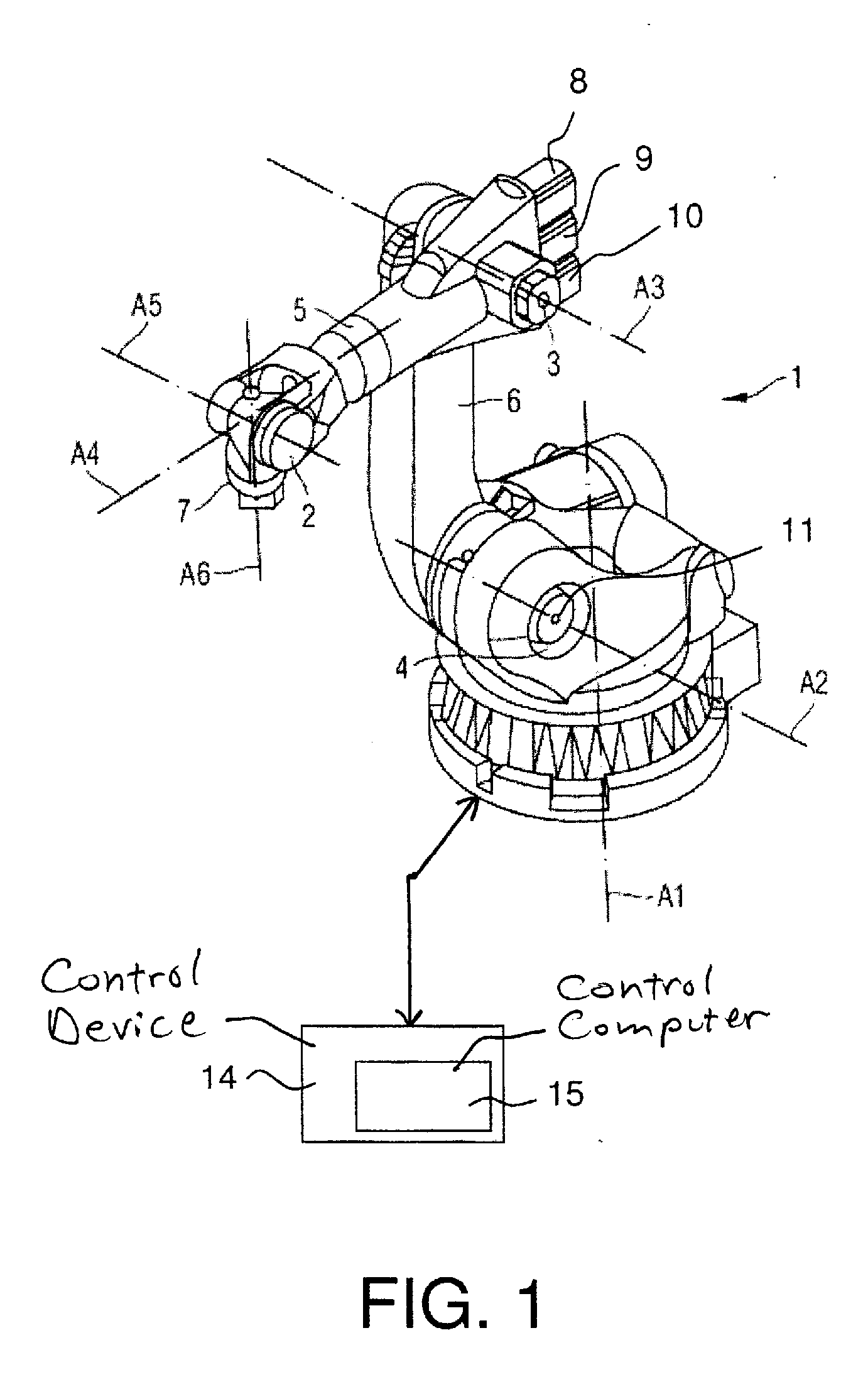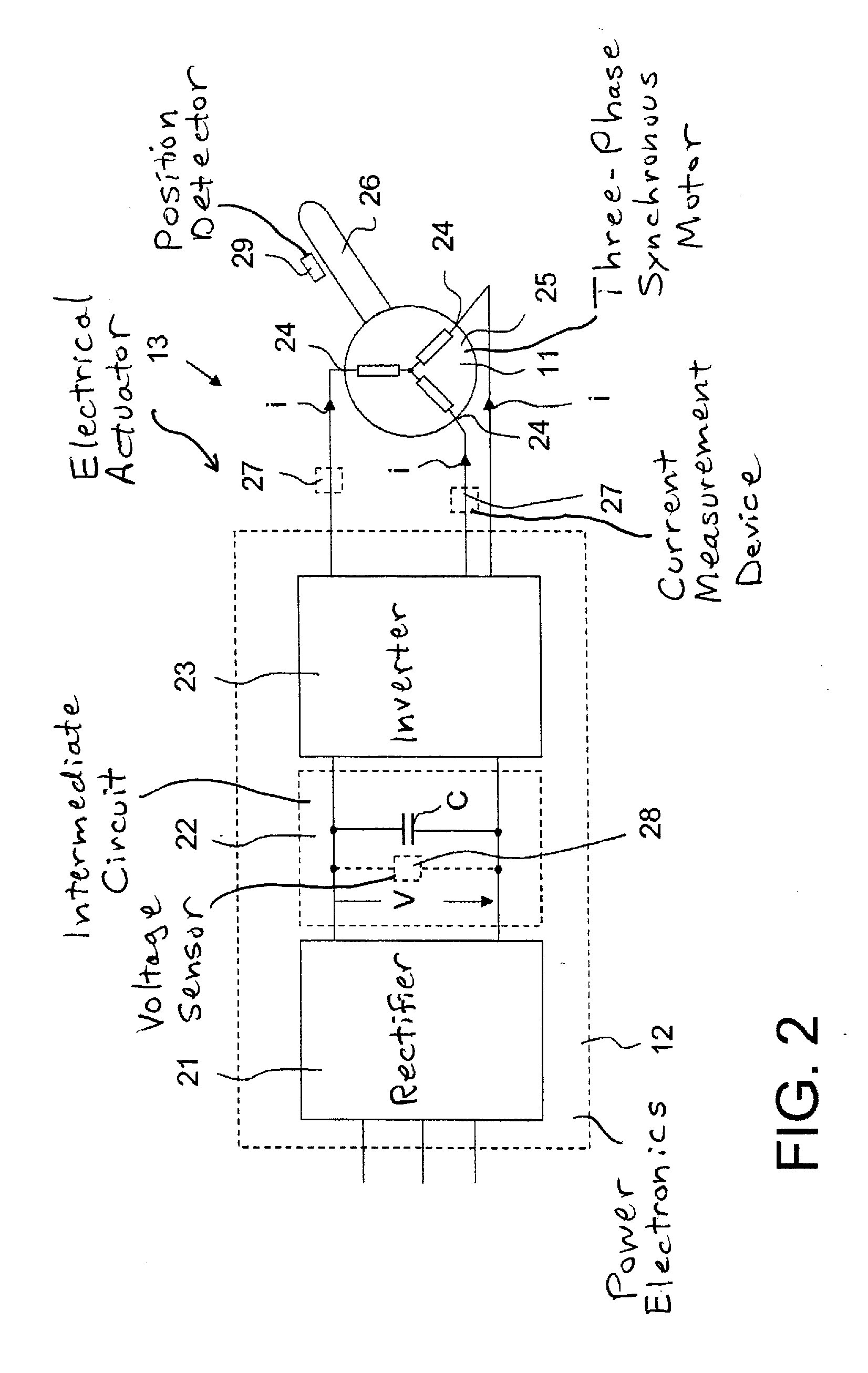Industrial robot and method to operate an industrial robot
- Summary
- Abstract
- Description
- Claims
- Application Information
AI Technical Summary
Benefits of technology
Problems solved by technology
Method used
Image
Examples
Embodiment Construction
[0035]FIG. 1 shows an industrial robot 1 with kinematics for movements in six degrees of freedom. The industrial robot 1 has in a generally known manner, joints 2 through 5, arm 6, six movement axes A1 through A6 and a flange 7.
[0036]Each of the axes A1-A6 is moved by an drive 13, all of which, in the case of the present exemplary embodiment, are electrical drives and each has a motor 8-11. For example, the motor 11 or the corresponding electrical drive 13 that is shown in FIG. 2 moves the axis A2, possibly by means of a transmission gearbox (not shown in detail but generally known to those skilled in the art).
[0037]In the exemplary embodiment, the electrical motors 8-11 are three-phase synchronous motors, in particular permanently energized synchronous motors. The motors 8-11 are each activated by power electronics 12 (what are known as converters) that, in the exemplary embodiment, are arranged in a control device 14. Each power electronics 12 is electrically connected with one of...
PUM
 Login to View More
Login to View More Abstract
Description
Claims
Application Information
 Login to View More
Login to View More - R&D
- Intellectual Property
- Life Sciences
- Materials
- Tech Scout
- Unparalleled Data Quality
- Higher Quality Content
- 60% Fewer Hallucinations
Browse by: Latest US Patents, China's latest patents, Technical Efficacy Thesaurus, Application Domain, Technology Topic, Popular Technical Reports.
© 2025 PatSnap. All rights reserved.Legal|Privacy policy|Modern Slavery Act Transparency Statement|Sitemap|About US| Contact US: help@patsnap.com



